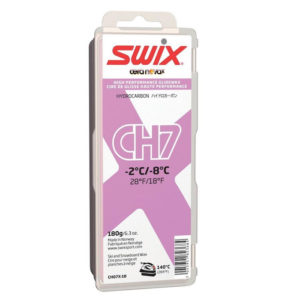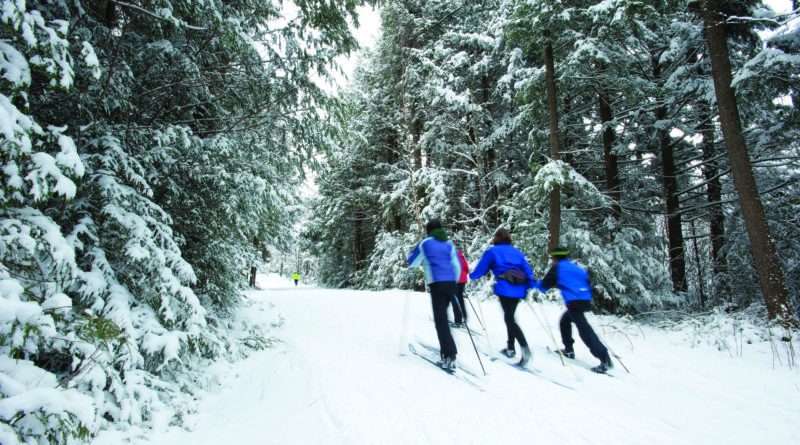The Face of Nordic Skiing is Changing
For a sport that’s been around since before recorded time, Nordic skiing has seen some amazing advances in the last few years. Here are a few of the best.
BY ANDREW GARDNER
While pop culture can be neatly sliced into decade- long lists of change and movement (the hippie Sixties, the neon Eighties, etc.), cross country skiing seems to resist big transformations. At many local trailheads, you’re still likely to find tall socks and knickers, age-old kick waxes and decades-old skis.
Yet in the past few years big changes have come to this 6,000-year-old pastime born under the northern lights. Cross country skiing has evolved thanks to epic shifts in gear, a changing climate, relentless media and more professional attention. Here are the biggest factors impacting the sport and what they mean for skiers gliding into 2020.
Greener Waxes
The biggest change in ski wax hasn’t been advancements in technology but rather the absence of it. In November, 2019, the Federation International du Ski, (FIS) the governing body for alpine and Nordic ski racing banned fluorocarbon ski waxes—not because they make skis faster (which they do, and everyone has been using them), but because of health and environmental concerns about the polyfluorinated materials (PFOAs) they contain.
In a study published in 2011, researchers in Norway and Finland found that ski wax technicians had “median levels of PFOAs in their blood that were 45 times that of the average population,” as reported in Scientific American, and traces of PFOAs were found in earthworms in an area that was heavily used by cross-country skiers. PFOAs, which are slow to break down and can seep into groundwater, have been linked to cancer, birth defects, hypertension and strokes.
In July, 2019 the European Union outlawed the sale of all substances that contain PFOAs. Here, the New England Nordic Ski Association has issued a waxing policy and recommends fluoro waxes be used “sparingly.” Larger wax brands have taken note. Swix Sport now can claim that 60 percent of its waxes are fluoro-free.
No-Wax Skin Skis
In the 1970s, Fischer employed a mohair-like base amidst its race-only selection. In

the last decade, every manufacturer of classic skis began employing a mohair-like skin on the kick have given new life to the sport and made skis like Fischer’s Twin Skin Pro the best-selling cross-country skis in the world.
While skin skis will never glide as fast as a waxed ski, they offer consistency of kick in variable conditions where there typically hasn’t been any. Mohair skins have been around since the 1970s but advancements in kick pockets–and general small areas coated with a mohair, Nylon or synthetic blend skin that stays on the ski—have revolutionized classic skis and now every major ski manufacturer is offering a different take on these no-wax wonders. These skis work best in the track or on groomed trails and have evolved enough that light-weight models have become popular on the recreational race circuits.
Adjustable Bindings
“It might seem small but the (Rottefella) Accelerator and the (Fischer or Rossignol) Turnamic binding likely saved classic skiing at the high school level,” says Jake Hollenbach, a competitive Nordic ski racer who runs the cross-country department at Burlington’s Skirack.
“The movement that binding offers lets kids buy a nicer ski – maybe one that doesn’t fit them perfectly in the first year and then slide the binding forward or back to allow for more kick or glide.”
Thanks to the sliding plate, the binding can be mounted without screws and is easily adjusted. Furthermore, bindings have finally adopted to a single standard after Salomon, the last holdout of a proprietary system in 2016, began offering an NNN compatible option in both boots and bindings making every boot and binding manufacturer in track skiing now compatible. The new bindings also help make the skin skis more effective by allowing for forward- aft movement, an adjustment that prompts the ski to perform differently based on the conditions. If you move it further forward, the binding allows for more weight on the kick pocket and hence, more grip. Further back yields more glide.
A Quiver of Skis for Any Terrain
As the explosion of alpine backcountry and fitness-focused uphill skiing has gained hold, there’s a widening new spectrum of skis designed to help you explore just about any terrain – from the ungroomed woods trails at Nordic ski areas to some of the wilderness terrain crossed by the Catamount Trail.
Many quivers now include everything from recreational skate skis and skinny in-track classic skis, to lightweight off-track cross-country skis, to serious downhill-focused alpine touring gear. Nordic and touring skis (those designed primarily for travel across the landscape, as opposed to going up and down) now come in a wide variety of widths, with a range of stiffness, weights and edges (some are metal for better holding on a slope.)
If you’re scratching your head about what skis you should buy, you are not alone. Head to your local ski shop and talk to the experts about the type of skiing you like to do.
Better yet, take advantage of any demo opportunities at your local trails. There’s a ski out there now for every skier and every type of terrain.
Mingling with the Best
In the past few years, the U.S. has turned out some of the top Nordic racers in the world and Vermont has been the Ground Zero training ground to many of them. Jessie Diggins, Sophie Caldwell, Katherine and Ben Ogden and many other current and past U.S. Ski Team racers make Vermont home when they are not off racing on the World Cup.
This winter, you might be able to catch them competing at the third stop of the Super Tour, held in Craftsbury Outdoor Center, January 24-26, a week before the Craftsbury Marathon Festival (Feb. 1) and the National Masters’ Championship (Feb. 2.)
The Digital Revolution
“When I was a kid, I had a VHS copy of a single World Cup race that I watched over and over again. I’m not sure it was even the World Championships or the Olympics.” describes Andrew Johnson, Head Coach of the Middlebury College Nordic Ski Team. “Now, every race is on demand and the effect is every kid in the sport can see the evolution of technique as it happens.”
In 2010, Eurosport partnered with the Tour de Ski, an eight-day ski stage race to bring live footage from each stage direct to a viewership. Today, a $70 subscription through NBC Gold (www.nbcsports.com/gold) allows for a live feed for every weekend race through the end of March and an on-demand option should you want to sleep in past the time zone required 5:00 AM start time.
Smaller races are gaining live stream traction including last year’s Junior National Championships and the NCAA Championships. These were races that were invisible just ten years ago unless you stood next to the course.
It isn’t just streaming media that’s changed skiing. In Scandinavia, a GPS is affixed to groomers managing the prepared tracks and an app offers a skier live reports on what’s been freshly groomed. Finally, if you’re inclined solely to spend your time scrolling the lonely pixels of social media, Instagram offers inside joke after inside joke via @crosscountryskimemes.
Making and Saving Snow
“If sports were like species, cross country skiing would be high on the endangered species list,” says Bill McKibben, a climate change activist and ardent Nordic skier. Yet, starting in early November, you can see McKibben making laps around the Rikert Nordic Center in Ripton, Vt. thanks to the cross-country center’s snowmaking.
In 2012, a Middlebury alumn donated the funds required to build out snowmaking coverage for up to five kilometers, allowing the center to open in early November and stay open through April in 2019. On December 14, as rain swept away most of the natural snow on Vermont’s trails, Rikert was able to host a high school race.
Both Trapp Family Lodge and, the Craftsbury Outdoor Center also have snowmaking and last year, Craftsbury worked with students from the University of Vermont to study the most efficient way to save snow through the summer. After burying a stockpile of snow under woodchips last spring, the Center had enough snow in November for an early opening.
Inevitably, snowmaking and snow saving will be a part of the future of the sport. Countless World Cups over the last decade have been run on a thin ribbon of white across an otherwise brown landscape. Ski wax sales have trended ever upward, and the Sochi Games saw a relaxation of the uniform rules, now allowing for sleeveless race suits and cutoff legs.
The lack of consistent natural snow has given rise to more and more artificial snowmaking systems, which has, ironically, made availability of skiing more consistent, if less ubiquitous.

Featured Photo: At Rikert Nordic Center, snowmaking has helped keep the trails open for 115 days or more a season.
Andrew Gardner is a former NCAA and elite Ski Coach. He owns Press Forward, a public relations firm in Middlebury, Vermont that serves outdoor sport, sustainability, food and wellness clients.


Greener waxes?
https://www.outsideonline.com/2408206/nordic-skiing-fluorinated-wax-swix